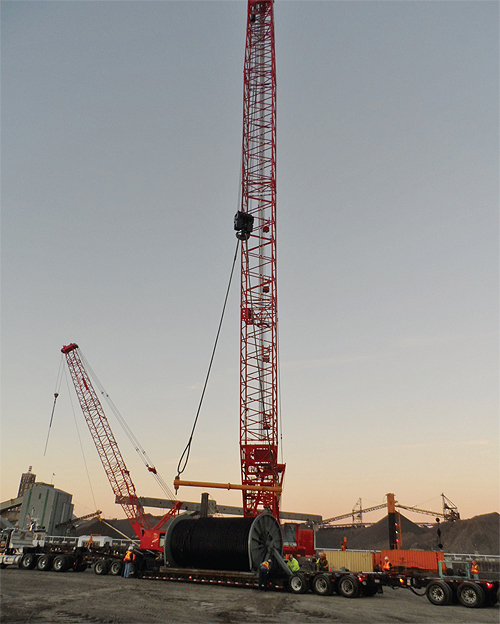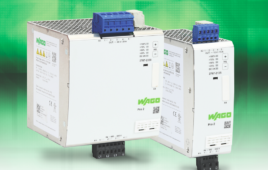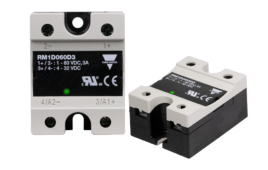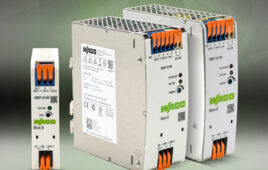When Cloverland Electric Cooperative wanted to replace the aging subsea cable that serves Drummond Island in Michigan’s Upper Peninsula, they turned to utility consultant GRP Engineering, Inc. to handle initial planning and design, cost estimates, permitting and installation oversight, and startup. As the successful bidder to Cloverland Electric, Kerite Co. provided the new cable. Running cable from the Michigan mainland out to Drummond Island under the tight timeline dictated by permit conditions went smoothly. The successful project ensures that island visitors, residents, and businesses have the electrical power they need for the foreseeable future.
Two subsea electrical cables serve Drummond Island, located at the end of Michigan’s eastern Upper Peninsula. The island has a large and growing number of resort communities, as well as some full time residents. It is also home to the Drummond Island Quarry, a major producer of crushed and broken dolomite, which is used in manufacturing steel, glass, paper, and as a soil neutralizer for agricultural applications.

Weighing in at 171,000 lb the continuous roll of EPR cable had to be loaded onto a special truck using Kerite’s special lifting equipment.
The two cables, one serving mainly residential dwellings and one serving the quarry, were installed in 1975 and 1989 respectively, and had reached the end of their useful life. When the quarry was operating at full capacity, there was insufficient capacity between the cables in the event of a failure, causing the quarry to partially shut down. While the load at the quarry is not expected to grow, the resort load is likely to increase as older, smaller cabins are turned into larger ones, and modern amenities like air conditioning are added. Cloverland decided to install a new cable that could handle the entire island. The plan was to maintain two circuits. The first would be replaced in 2014, while the sister cable is budgeted for completion in 2017.
With more than a hundred years of know-how in providing subsea cable, Kerite is also the only US manufacturer of ethylene-propylene-rubber (EPR) subsea cable. Kerite’s EPR insulation formula enables its subsea cables to operate in direct contact with water, without the need for an impervious lead sheet or asphalt coating. The cable can be covered with individually jacketed steel armor wires for mechanical protection and ease of installation pulling. During the bidding process, Kerite responded to Cloverland’s questions about thermal issues, providing a report with engineering test data to confirm the cable’s amperage, showing that the cable is good for 340 A.
The project required 7465 ft of 28 KV cable; Kerite provided the full length in one continuous piece of cable with no splices. The line is currently being operated at 7.2/12.5 KV, and Cloverland will potentially be switching to a 14.4/ 24.9 KV operating voltage. There are three single phase conductors, each 350 KCM (1000 circular mils), and a full uninsulated neutral at 350 KCM. Also included is a 24-count fiber optics cable that Cloverland is using for communications with its substation and motor-operated switches on the island. Spare fibers are being leased out to the island’s high speed Internet service.
The design called for installing the cable 20 ft below the low water datum at a depth of 6 ft. Once the cable is beyond 20 ft, the cable is changed out and then lays on the bottomland of the DeTour Passage. Typical cables are installed 15 ft below the low water datum at a depth of 4 ft, but with this location on the St. Mary’s River, the deeper installation protects the cable from boats, ice or other objects that might puncture the cable.
The original plan was to pull the cable from the mainland side at DeTour village, to the Drummond side. However, because of strong winds, GRP Engineering made the decision to pull from the Drummond side to the DeTour side. The entire project was completed in eight days and the cable is now energized and carrying the quarry load on the cable.
“Kerite did a great job. They were concerned about getting it done properly and on time, and keeping to the schedule to ensure compliance with the permit conditions,” said Michael McGeehan, president of GRP Engineering. “We were very happy when it was completed and installed. Everyone involved made sure the cable would be a success.”
The Kerite Co.
www.kerite.com
Filed Under: Cables + cable management, ELECTRONICS • ELECTRICAL





Tell Us What You Think!